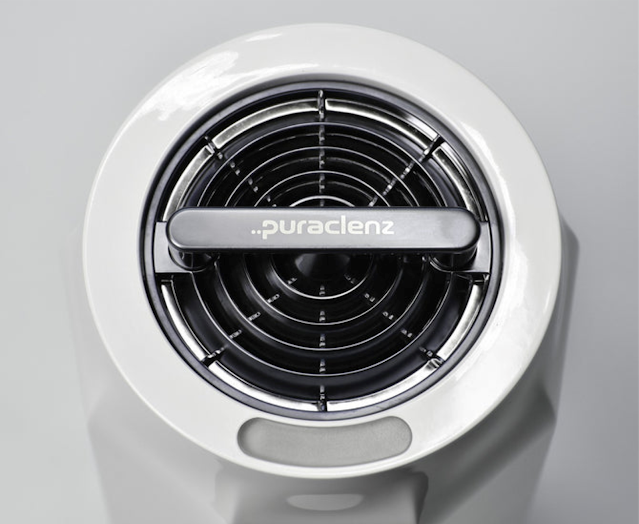Puraclenz uses an evolved form of photocatalytic oxidation (PCO) used by NASA to provide clean air for astronauts. PCO has been safely used to purify the air and exposed surfaces for more than 40 years in many commercial applications. Our patented cell design generates an exceptionally high density of ozone-free ions to proactively deactivate indoor pollutants. Next-Gen PCO Air Purification
Puraclenz evolved from technology to chemically-create clusters of neutral gas molecules in the air we breathe. The PCO process uses an internal UV light that reacts with a titanium dioxide-coated catalyst to produce positive and negatively charged ions that deactivate pathogens.
What are ions? An ion is an atom or molecule that has gained or lost an electron, giving it a positive or negative electrical charge. When ions disperse throughout a space, they react with single-celled organisms to break down their cell membranes and destroy the cell. After the interaction, the molecules lose their electrical charge and are released back into the air as water vapor. Puraclenz’s ultra-efficient catalyst design allows our products to use UV lamps that produce no ozone emissions. PCO has over 40 years of peer-reviewed and studies performed by third-party independent labs and universities to deactivate pathogens.
It Actively cleans air and surfaces. Using air as a medium to deliver ions allows Puraclenz to clean pollutants exposed to the air and hard-to-reach exposed surfaces missed by hand-cleaning or HEPA filters. Example: When someone coughs or sneezes in a room being treated with conventional air purifiers, such as HEPA filters, microorganisms must move through the space back to the fan unit where it is collected by a filter. Puraclenz products are designed to deactivate pathogens in the air before reaching other people in the room, without requiring circulation through a filter.
TO LEARN MORE VISIT






